How to Start a Self Storage Business

Starting a new self-storage business in an unfamiliar industry may seem daunting. However, with the right foundation and extensive guide, you can run a successful facility.
Consider the profit margin, typically well above those of other small businesses, such as restaurants. This growing market continues to thrive, providing more than just space, but also security and accessibility for a wide array of needs.
Self-storage units come in various sizes, catering to a range of needs—from furniture and art to TVs and documents. Seasonal items like holiday decorations and collections such as wine can also find a home here. Even vehicles, boats, and RVs are common sights at these facilities.
To start, understanding the market needs is crucial. Potential customers range from small businesses storing business equipment, inventory, and supplies, to individuals looking for space to store personal belongings. The versatility of self-storage allows for customization, with units often converted into high-end spaces like man caves and she sheds, or used as a warehouse for a variety of wares.
What is Self-Storage?
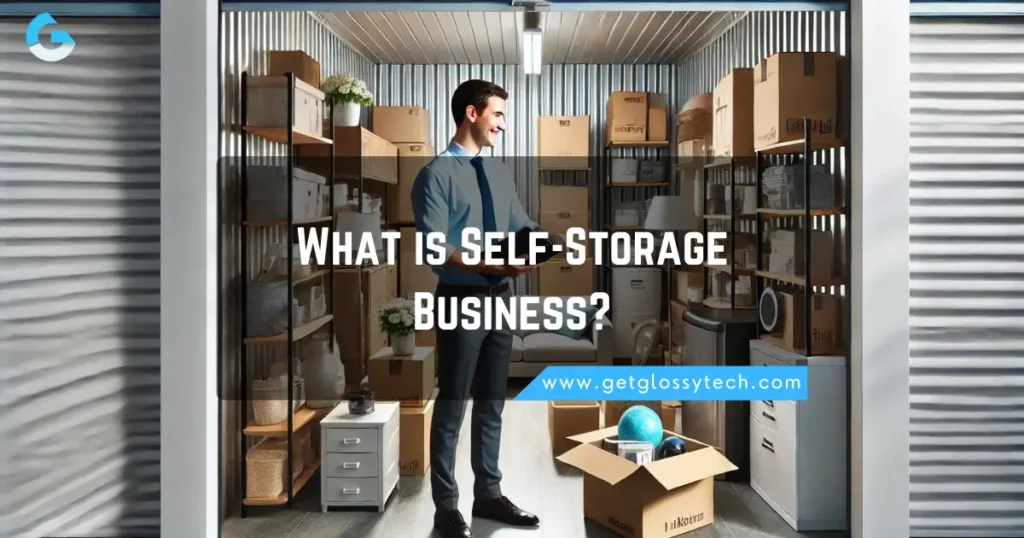
A self-storage business provides consumers and businesses the space to store goods and belongings temporarily. This enterprise has exploded in popularity over recent decades, with a global market value reaching approximately $51.32 billion in 2021.
The appeal lies in the ease and adaptability of self-storage services, making it a cost-effective solution for those in transition, such as moving to larger quarters or storing seasonal inventory.
Self-storage proves to be Low Maintenance compared to other businesses. It’s relatively hands-off once the initial investment in security and upkeep is made, allowing owners to generate income passively.
Venturing into the self-storage business offers a mix of unique advantages and challenges that potential owners should carefully consider. Here’s a succinct breakdown of the pros and cons:
Pros
- Lucrative Opportunity: The demand for storage space is consistently strong, bolstered by factors like downsizing homes and the rise of online shopping, making it a potentially profitable business.
- Recession-Proof: Historically, the need for self-storage tends to remain stable or even increase during economic downturns, providing business stability.
- Low Ongoing Maintenance: Once established, self-storage facilities require relatively low daily maintenance compared to other business types, offering a more passive income stream.
Cons
- High Initial Investment: Starting a self-storage facility can be capital intensive, with significant upfront costs in real estate, construction, and security.
- Management Responsibilities: You are responsible for the security and safety of your customers’ belongings, which can be a significant liability and require meticulous management.
- Market Saturation: In some areas, the market may be highly competitive, requiring more effort in marketing and customer service to stand out.
Understanding these factors will help you make an informed decision about entering the self-storage industry.
Important Steps to Start
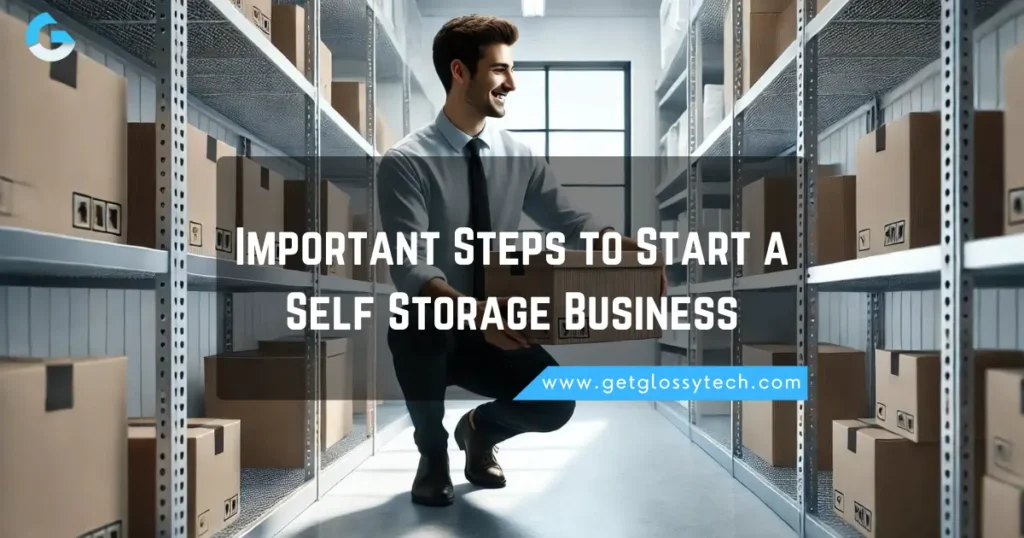
Research is fundamental. You need to understand local market demands and find a suitable location that’s accessible to your potential customers—from families needing space during renovations to businesses managing inventory. Ensuring your facility meets these needs with various unit sizes and secure, clean environments is crucial.
By delving into the self-storage industry, I’ve seen firsthand the opportunities that emerge, even in economic downturns. Starting this venture involves more than just offering space; it’s about creating a secure, convenient, and flexible storage solution that grows with your community’s needs.
Additionally, navigating the legal aspects of owning a storage facility and securing funds are critical steps that determine the framework of your business.
Understanding the Basics of Storage Business

Starting a self-storage business is more than just offering empty units; it’s about creating a secure and accessible space for people to store their belongings.
Whether it’s college students needing to store their stuff over summer, or families using storage during home renovations, the need is consistently strong.
This basic demand makes self-storage facilities a stable and attractive market for entrepreneurs.
Launching Your Venture
Opening a self-storage is akin to planting a seed in fertile ground. The initial investment might be significant, covering buildings, security, and upkeep, but the passive income generated can be highly lucrative.
The industry is recession-proof, often seeing an increase in demand when the economy dips as businesses and individuals downsize.
Navigating Market Trends
The growing popularity of online shopping and smaller living spaces in cities has spiked the demand for storage spaces. A recent study by Multi-Housing News post predicts new opportunities in this sector by 2024, highlighting its rising popularity. Market research and understanding the legal stuff are vital steps in unlocking the potential of your self-storage facility.
How Much Will It Cost to Start a Self-Storage Business?

When scouting locations for a self-storage facility, deciding between buying an existing facility or building a new one is crucial. The cost to start a self-storage business can vary significantly. Factors such as location, acquisition costs, land costs, and facility construction costs play a big role.
Whether you purchase or develop a facility, understanding where the money will come from is vital. Will you use liquid assets, take out an acquisition or construction loan, or recruit self-storage investors to finance your acquisition and development?
Once established, the ongoing cost to operate your facility involves decisions on whether to run it on your own or hire a staff or a third-party management company. Installing self-storage management software like SiteLink can streamline operations.
- Regulatory Compliance: Include real estate taxes and other regulatory costs as part of your ongoing operating expenses.
- Employee Management: Consider whether you will hire staff to manage the facility or operate with minimal personnel to reduce payroll expenses.
Who Uses Self-Storage?
Self-storage services offer ease and adaptability, attracting a wide range of customers. For instance, college students may use these facilities to store their stuff over the summer, while families might need temporary space during home renovations.
Additionally, businesses often rely on these spaces for seasonal inventory or overflow stock, appreciating the flexibility and lack of a binding, long-term commitment.
8 STEPS FOR GROWING A SELF STORAGE BUSINESS
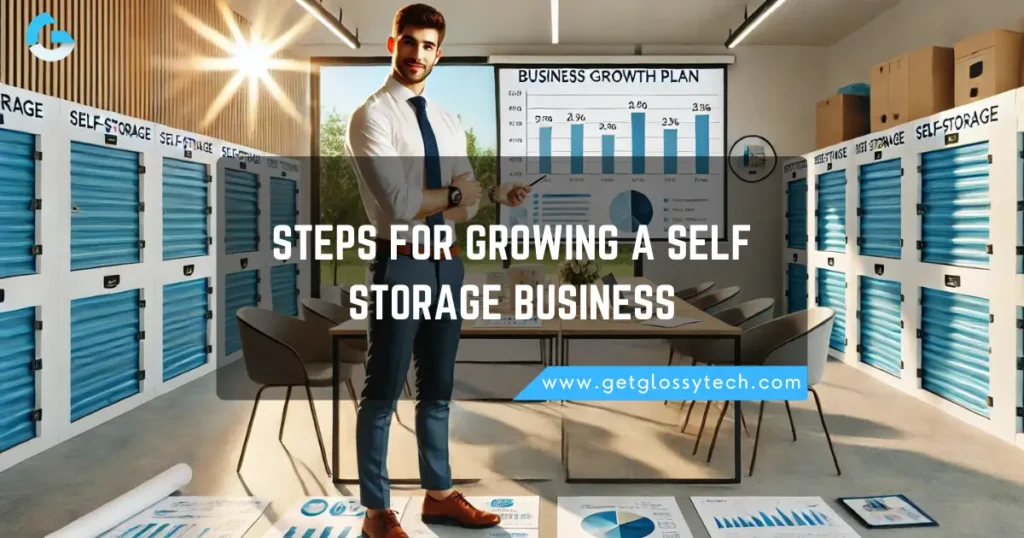
Ideal Location
To launch a successful self-storage business, selecting an ideal location is crucial. It’s essential to set up shop in an area where demand for storage solutions is high but not fully met by existing facilities.
Opt for locations with a sparse number of competing businesses to increase your chances of attracting and retaining customers. Densely populated areas or cities with diverse housing options are excellent as they often house people needing temporary or downsizing storage solutions.
Choosing a location with this in mind helps maintain a balance, allowing you to run some operations remotely and visit the site only as needed, thereby optimising both time and resources.
Business Plan for Self Storage Business
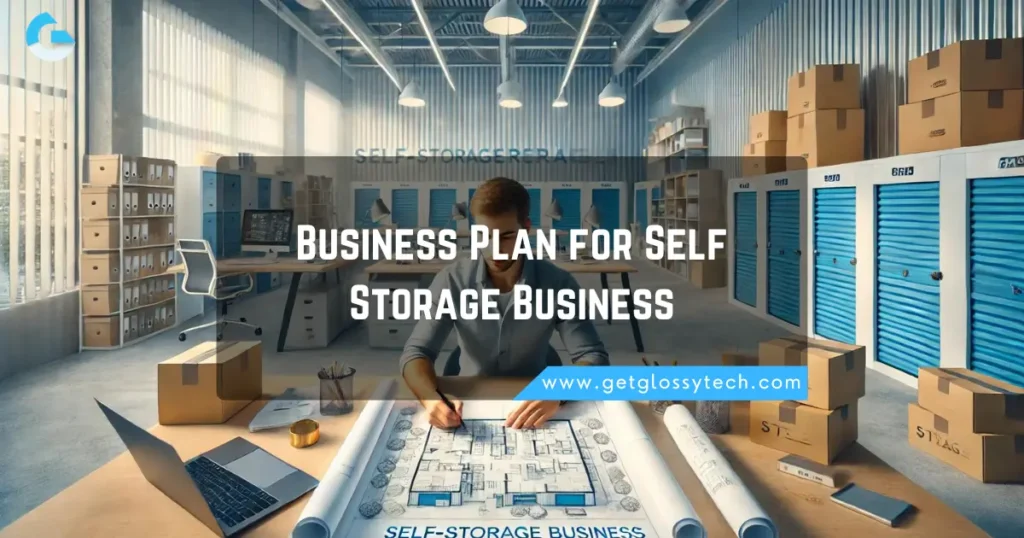
Creating a credible business plan is crucial when starting a self-storage business. This document outlines your company’s financial and operational intentions for the first few years.
A well-thought-out plan is not just about structuring your business—it’s a powerful catalyst for development, helping to attract investors and secure funding from financial institutions.
Your business plan should detail the type of self-storage you intend to open—from climate-controlled storage to vehicle storage or 24-hour storage. It must include a mission statement, vision statement, ownership structure, and sources of capital..
Consider the logistics of your specific self-storage facility. For instance, if investing in outdoor storage, you might detail plans for buying or leasing land to provide semi-sheltered areas or drive-up storage units. These aspects of your plan should reflect the initial investment size, which can vary based on the facility type and location.
Benefits of business plan
Crafting a credible business plan is crucial for any entrepreneur looking to break into the self-storage business. This plan outlines not only your target market and how you intend to reach them, but also details how you will run your company both financially and operationally over the first few years
To develop a business plan, you can work independently using examples found online, or consider hiring a professional business plan writer. Alternatively, enlisting the services of a nonprofit organisation like SCORE, which provides free business counselling, can also be beneficial
A self-storage facility business plan typically includes a mission statement, vision statement, ownership structure, sources of capital, revenue streams, market research analysis, and competitive analysis.
Define Your Brand of Storage Business
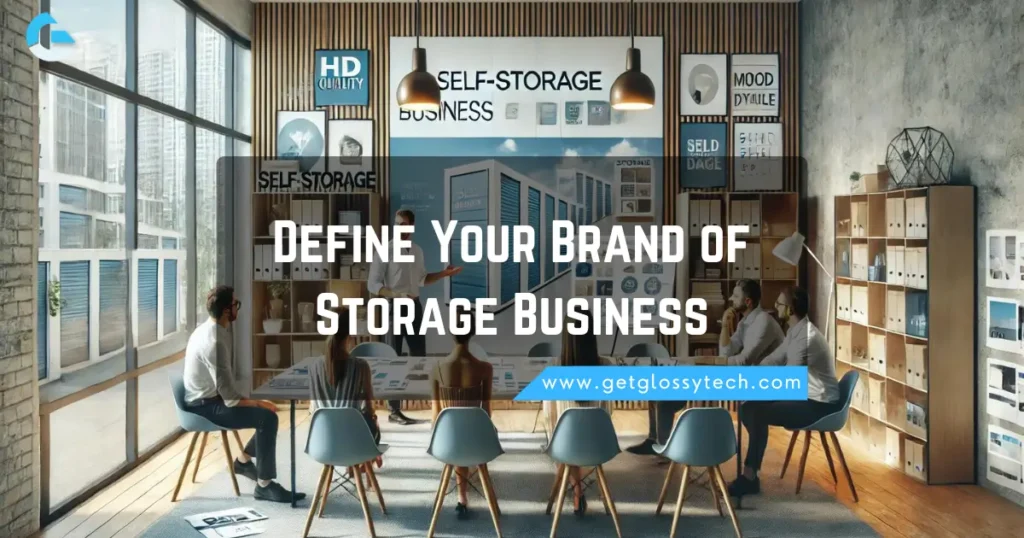
Creating a strong brand for your self-storage business means defining what sets your company apart. This includes crafting a unique name, logo, and slogan that resonate with your target audience.
Your brand should embody the qualities that make your services distinctive and desirable, such as security, accessibility, or customer service excellence.
- Target Audience Understanding: Determine what your customers value most, whether it’s affordability, security, or premium features.
- Visual and Verbal Identity: Develop a cohesive visual and verbal identity that communicates your brand’s unique attributes effectively.
In today’s competitive market, it’s crucial to build a brand that not only stands out but also establishes trust and loyalty among customers. Consider the values and expectations of your demographic; are they looking for cost-effective storage solutions or perhaps premium, climate-controlled units? Your branding should clearly communicate the solutions that your self-storage facility provides.
- Strategic Positioning: Align your branding with the specific needs of your market to stand out against competitors.
- Trust Building: Ensure your branding conveys reliability and professionalism to build trust with potential customers.
Moreover, effective branding can be your business’s most powerful tool to compete against both regional and national competitors. Developing a memorable self-storage brand will help attract renters and keep them coming back.
Obtain Necessary Permits and Licences

To avoid the risk of hefty fines or being shut down, acquiring the necessary permits and licences is crucial when starting a self-storage business. Each state has different licensing requirements, which you can learn about by visiting resources like the SBA’s reference to state licences and permits..
Depending on your location, you may also be required to collect sales tax on the goods and services you provide. Understanding how sales tax could affect your business is vital, and information is typically available through state government resources.
For those planning to lease or purchase a location, obtaining a Certificate of Occupancy (CO) is critical. This document confirms that your building complies with all building codes, zoning laws, and government regulations.
Never launch your business without securing the appropriate licences and permissions, as failure to do so can lead to severe financial penalties or even closure of your enterprise.
Making a Website for Storage Business
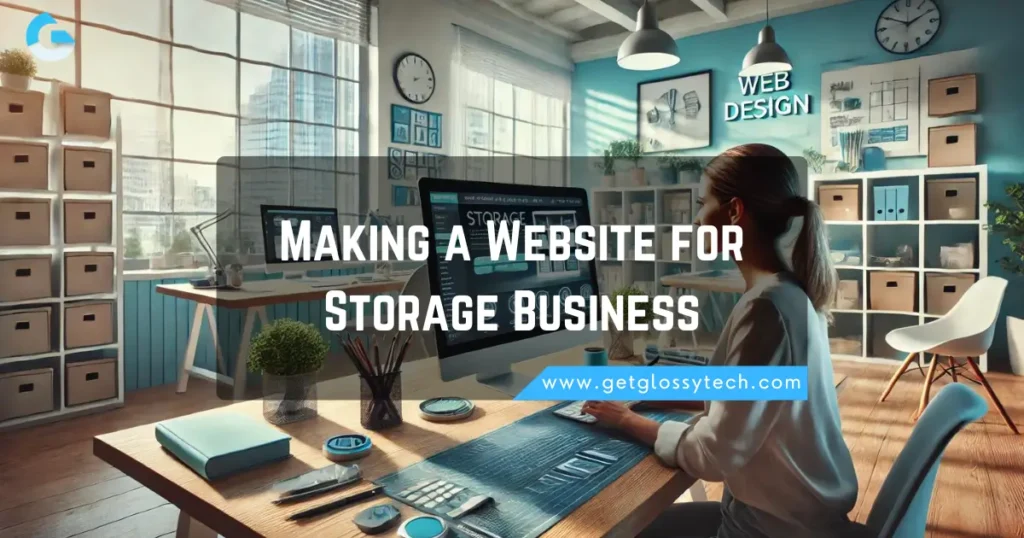
After defining your brand and creating a logo, the next step in establishing your self-storage business is to create a website. In today’s digital age, having a user-friendly website is an essential step for any business.
It’s not just about having an online presence; it’s about making your business accessible to consumers who search for self-storage facilities online.
Building a website might seem daunting, but it’s more accessible than ever with tools like Website Builder. Alternatively, hiring a web developer or designer can help create a professional site you’re proud of.
A well-designed website not only attracts buyers but also supports business operations by integrating self-storage software like Storeganise, which makes managing your facility seamless.
- Ease Payment Processes: Your website can reduce rent arrears by making it easier for tenants to manage their accounts and cover their payments.
- Enhance Visibility: Effective SEO strategies on your website increase the likelihood that potential clients will find your storage facility through an online search.
A user-friendly website can significantly enhance your ability to attract consumers searching for self-storage facilities online. Without a website, it’s unlikely that potential customers will come across your business easily.
Managing the Self-Storage
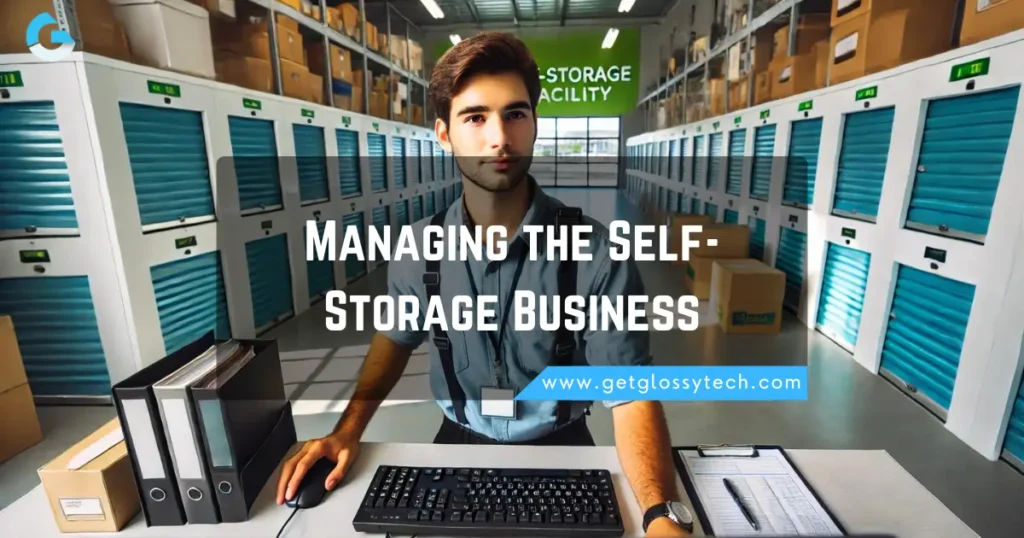
Managing a self-storage business may seem mundane at first, but there are many ways you can put a unique imprint on the industry. Developing your company’s identity through advertising can be quite fun.
For instance, some business owners have found success by incorporating comedy into their marketing strategies. You never know when the comedic juices might start flowing, potentially improving the public’s perception of self-storage facilities.
Hiring Family and Finding the Unexpected
When you run a self-storage business, you’re in a fortunate position to potentially hire relatives or close friends, which can make day-to-day operations more enjoyable. However, you’re also likely to encounter strange items in storage units.
- Including anything from taxidermized animals to film celebrity memorabilia or even an electric chair.
- Embracing the wild side of self-storage won’t harm your business and may offer fantastic tales to tell.
Adhering to Regulations
It’s crucial, however, to remember that regulations dictate what can and can’t be kept in storage facilities. As the owner, you must access and, if necessary, dispose of the contents according to these rules.
Managing a self-storage facility requires awareness of these guidelines to ensure everything is done properly, safeguarding both your business and your customers’ belongings.
Security Measures for Self-Storage Business

Ensuring your self storage is safe and secure for customers should be a top priority when starting a self storage business. One effective method is using a padlock range where padlocks are individually keyed with numbers for each self storage unit.
These padlocks are controlled by a master key that you, the owner, keep in possession. This security option ensures a high quality and standard of security, minimising risks associated with lost keys or unauthorised access.
Flexibility in Locks and Advanced Security Options
Some self storage business owners choose to allow their customers to use their own locks, catering to the preference of the customer. However, this can lead to complications if a key is lost or misplaced, potentially requiring the unit to be broken into.
For those starting a self storage business within a warehouse, considering keyless entry systems can add an extra level of security for both the owners and other customers using the storage units. Although more costly to install and manage, these systems can justify a premium charged to customers.
In scenarios where police have a warrant to search a storage unit, the absence of a key can complicate matters.
Market Game Plan

Mapping out a marketing strategy is the final, essential element of business planning for a new self-storage business. Developing a clear and comprehensive marketing strategy is crucial because there is no single way to market a business.
It’s important to demonstrate flexibility and adaptability as you find the approach that works best for your business. In the early stages, try to cover a few key areas that will establish your presence in the market.
Your growth strategy should cover plans for expanding your business over time. This might include elements like securing more storage units or employing additional staff to handle increased demand. Consistently incorporating these growth plans into your overall business strategy is essential for long-term success.
By carefully planning and executing these strategies, you will set a solid foundation for your self-storage business to thrive and expand in a competitive market.
Market Penetration and Communication Strategies
Market penetration means making your entry into the market by creating a distinct space for your business. This could involve targeted promotions and strategic advertising using both online platforms and traditional methods like printed materials and flyers.
The communications strategy should focus on how to reach customers directly, ensuring they are aware of what sets your services apart from competitors.
Extend Your Business
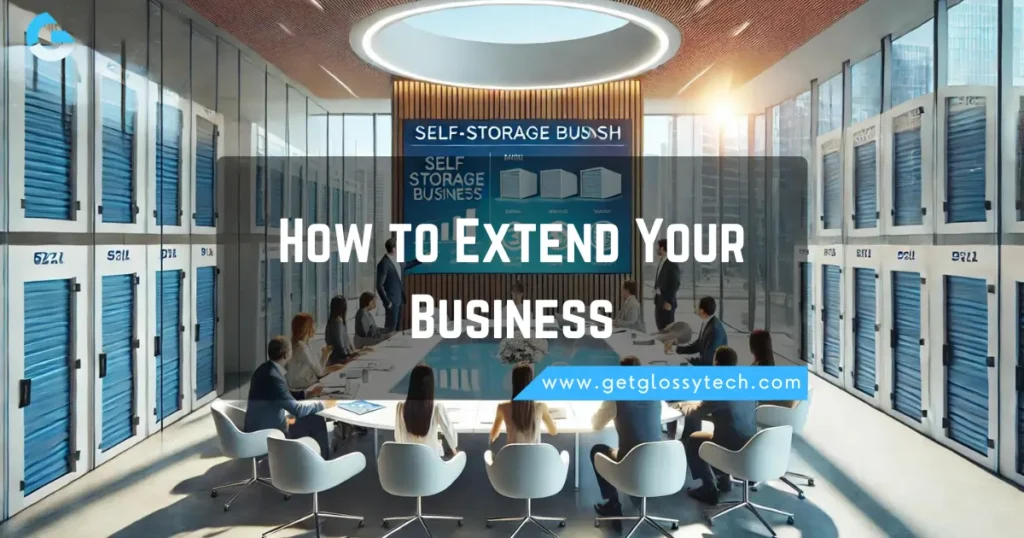
Create a User-Friendly Website
In today’s digital world, having a user-friendly website is essential for any business, including self-storage. A website not only establishes your online presence but also acts as a crucial tool for attracting customers. It should be easy to navigate, provide clear information about your services, and allow potential clients to make online bookings effortlessly.
Investing in a professional web design service can ensure that your site is optimised for both desktop and mobile users, helping you reach a wider audience and increase conversions.
Optimise Your Online Presence
Once your website is up and running, the next step is to optimise your online presence. This involves implementing SEO strategies to improve your site’s ranking on search engines like Google. Use relevant keywords, such as “self-storage units” and “affordable storage solutions,” in your content and meta descriptions.
Additionally, create engaging blog posts and articles that address common storage concerns, which can drive organic traffic to your site and position you as an authority in the self-storage industry.
Leverage Social Media Marketing
Social media platforms like Facebook, Instagram, and LinkedIn are powerful tools for promoting your self-storage business. Regularly posting updates, promotions, and helpful storage tips can engage your audience and keep your business top of mind. Encourage satisfied customers to leave reviews and share their experiences on social media.
This not only builds credibility but also expands your reach. Effective social media marketing can significantly boost your visibility and attract more leads to your business.
By focusing on these areas, you can create a strong online presence that not only attracts customers but also helps your self-storage business grow and thrive.
FAQs: How To Start A Self Storage Business

Are storage sites profitable?
Starting a self storage business can be a lucrative venture if managed effectively. Once occupancy levels reach about 50-70%, you can expect to break-even. However, a well-located building can operate profitably with 85-95% occupancy rates, leading to a net income of around 27% of rental income after covering all operating expenditures and loan debt payments.
For example, renting a unit at a yearly rate of $17.04 per square foot (or $1.42 per square foot per month) in an 80,000 square feet building can generate a yearly rental income of approximately $1.4 million.
What is an Existing Self Storage Facility?
It’s a good idea to purchase an existing self storage facility as it can save you the stress of finding land and building a new facility. By buying an existing one, you can renovate the facility to suit your tastes and needs, and even expand it if necessary.
The cost of purchasing an existing facility varies widely, reflecting the wide variety of self storage options available. For instance, a self storage facility in London might cost tens of millions of pounds, while a similar facility in rural Carlisle could be less than a million pounds.
Bottom Line: How To Start A Self Storage Business
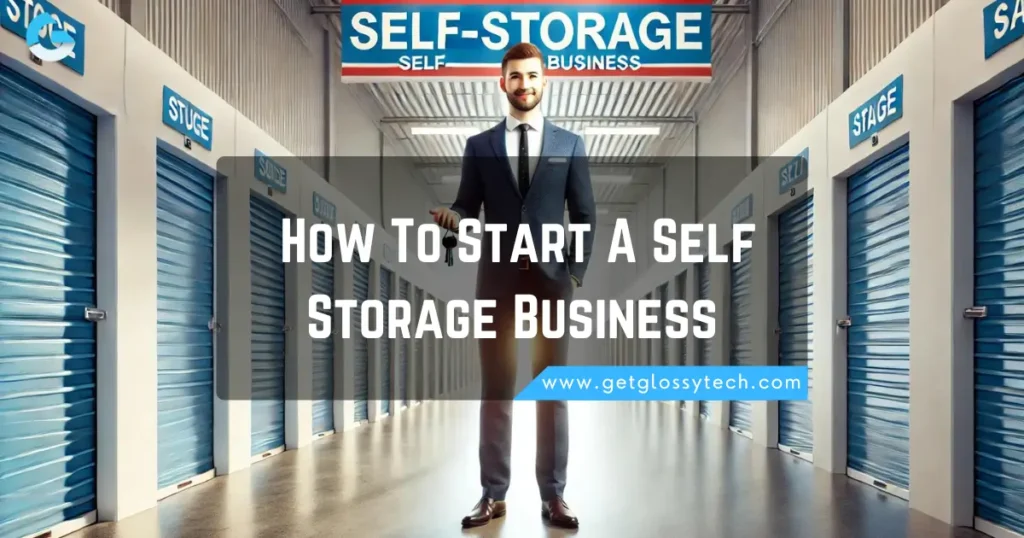
In summary, acquiring an existing facility or building a new facility can open doors to significant investment gains. Storage facilities require little capital outlay and upkeep, have modest property taxes, and their net acquisitions have surged.
As Forbes.com contributor Brad Thomas noted in November 2017, in both good times and bad, storage units are a reliable investment, much like a trusty spouse.
Evidence of the industry’s growth is abundant. In 2018, self-storage occupancy rates and rental rates in many U.S. markets reached record highs.

